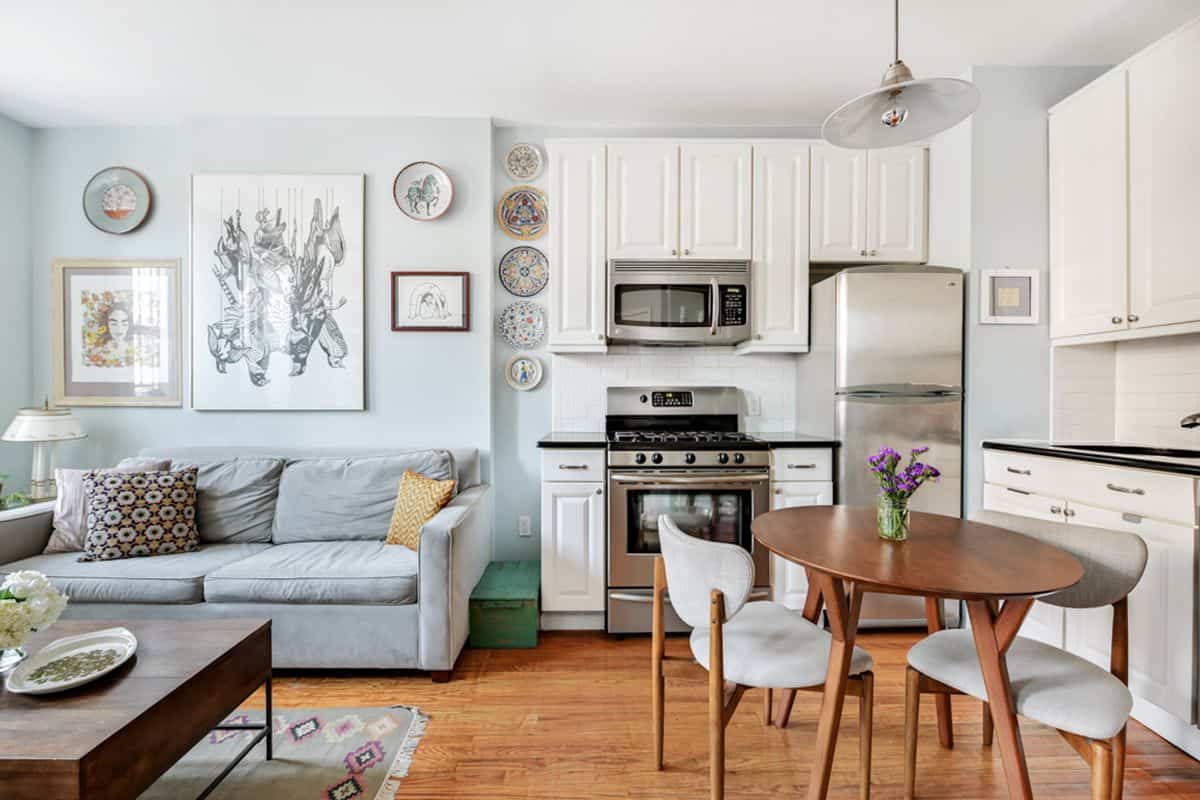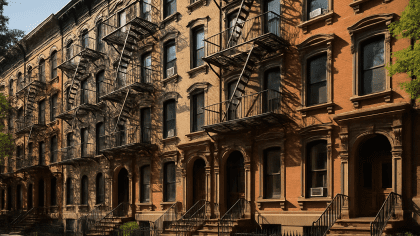New York City’s housing market is as iconic as its skyline. From historic brownstones in Brooklyn to sleek penthouses towering over Central Park, the city offers an unmatched variety of living arrangements. Whether you’re moving for work, school, or the adventure of urban life, understanding your options is key to a smooth housing search.
This guide explores all types of apartments in NYC, explaining what they offer, who they’re best for, and how to navigate the rental landscape.
Quick Summary
This guide walks through the many types of apartments you’ll encounter in New York City. You’ll learn the differences between studios, one-bedrooms, lofts, duplexes, and high-rise luxury condos. We explore unique formats like railroad apartments, garden units, and micro apartments. You’ll discover the pros and cons of furnished versus unfurnished rentals, how co-ops compare to condos, and what features define pre-war and post-war buildings. Whether you’re considering a sublet, looking for a shared apartment, or deciding between a flex unit and a junior one-bedroom, this guide explains it all to help you make an informed move.
Studio Apartments
Studio apartments are compact, single-room spaces that combine the living, sleeping, and kitchen areas into one. Some variations, like alcove studios or junior one-bedrooms, offer a slightly more spacious or segmented layout.
- Who it’s for: Solo renters, students, minimalists
- Common in: High-demand neighborhoods with high rental costs
- Variants: Alcove studio, micro apartment, junior one-bedroom
One-Bedroom Apartments
One-bedroom apartments feature a separate bedroom, offering more privacy and comfort. These units work well for singles or couples who want room to host or work from home.
Two-Bedroom Apartments
Perfect for roommates or families, two-bedroom apartments often include larger kitchens or living areas. Some are designed as flex apartments, allowing renters to divide space using temporary walls.
- Other formats: Railroad-style units where rooms are aligned in a straight layout without hallways.
Loft Apartments
Lofts are typically converted from warehouses or factories, featuring high ceilings, open layouts, and oversized windows. Many come unfurnished and appeal to creative professionals.
- Popular neighborhoods: SoHo, DUMBO, Tribeca
Duplex and Triplex Apartments
These multi-level units provide separation between living and sleeping areas and are commonly found in brownstone buildings or larger residential developments.
Shared and Co-Living Spaces
Shared apartments are a budget-friendly way to live in the city, with roommates splitting rent. Co-living arrangements may include cleaning services, shared common areas, and flexible leasing.
Luxury Apartments
Luxury units are usually found in high-rise buildings with doormen, fitness centers, and panoramic views. These include penthouses, which sit on the top floor and offer premium finishes, large terraces, and privacy.
- Also includes: Furnished or unfurnished condos with private amenities
- Neighborhoods: Midtown, Financial District, Upper East Side
Affordable Housing Options
These include rent-stabilized units, NYC housing lottery apartments or townhouse, and income-restricted co-op opportunities. Although competitive, they offer long-term affordability.
Walk-Up vs Elevator Buildings
- Walk-Up Apartments: These buildings don’t have elevators and are often located in pre-war brownstones or small apartment buildings.
- Elevator Buildings: Found in both post-war and modern high-rise buildings. Ideal for moving logistics and accessibility.
Short-Term Rentals and Vacation Apartments
Short-term options are available through sublets or rental platforms. These can be furnished or unfurnished, and usually don’t require long-term lease commitments.
Note: NYC has strict laws around short-term stays, especially in non-owner-occupied buildings.
Other Apartment Styles to Know
Penthouse
The top unit in a high-rise or luxury building, often with exclusive elevators, skyline views, and wraparound terraces.
Condo
Owned by individuals, these units can be rented out and offer more flexibility than co-ops.
Co-op
Requires board approval to rent. You buy shares in the building rather than owning your unit outright.
Brownstone
Historic walk-up buildings, mostly in Brooklyn and Harlem. Known for charming facades and classic interiors.
High-Rise
Buildings with more than 12 floors. Many offer doormen, elevators, and in-building amenities.
Micro Apartment
Small studio-style units under 350 sq. ft., designed for ultra-compact city living.
Railroad Apartment
A linear layout with rooms arranged in a straight line, typical in older walk-up buildings.
Pre-War Apartment
Built before WWII, known for thick walls, decorative moldings, and solid construction.
Post-War Apartment
Built after WWII with more modern layouts and typically in elevator buildings.
Garden Apartment
Ground-level units with access to a shared courtyard or private outdoor space.
Basement Apartment
Located below street level, usually less expensive but can lack natural light.
Alcove
A nook or small recessed space in a studio that can be used for sleeping or working.
Junior One-Bedroom
An alcove studio with a defined bedroom area but no full wall separation.
Flex Apartment
A convertible unit where space is divided with temporary walls to create more rooms.
Sublet
A legal rental arrangement where the original tenant rents out their space to another person, often for a shorter term.
Unfurnished
Units without furniture, which often have lower monthly rent and more flexibility to personalize.





